Nextiva Alternatives
A direct comparison of Nextiva and 10 alternatives. We analyze features, pricing, and support to help you choose the right VoIP service.
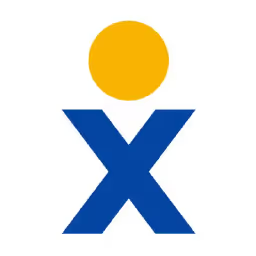
You likely chose Nextiva for good reasons. It’s known for a solid phone system and reliable call management features. For many businesses, it handles core communication needs effectively, which makes it a popular choice in the first place.
However, some users find the platform can be complex, and customer support is not always as fast as they need. We analyzed the best alternatives to Nextiva based on G2 reviews to help you decide. Let's get started.
Consider 11x for Your Sales Team
If you want to add digital workers to your sales force, 11x offers a specialized solution. The platform provides autonomous agents that handle sales tasks. This could be a relevant option for your growth strategy.
11x is a go-to-market platform where we use AI agents to manage sales. An agent named Alice finds prospects, handles outreach on email and LinkedIn, and updates your CRM. Julian, another agent, qualifies inbound leads and schedules meetings.
With 11x, we replace separate tools for data enrichment, outreach, and email warmup. The platform combines these functions, which can simplify a traditional go-to-market stack.
Nextiva Alternatives
Below is a detailed breakdown of each Nextiva alternative. We compare pricing, core features, and the specific advantages and potential drawbacks of each option to help you decide.
1) RingCentral MVP

RingCentral MVP is a unified communications platform that combines phone, video, and messaging into one application. The system provides a business phone service with features for call management.
It acts as a central point for all company communications. The platform supports multiple channels to connect employees with each other and with customers, which suits businesses that want an integrated solution.
RingCentral MVP's Main Features
- Combines phone, video, and messaging into a single application.
- Provides a business phone service with features for call management.
- Supports multiple communication channels for internal and external connections.
How RingCentral MVP Differs From Nextiva
Average Review score: 4.0/5 stars based on 154 G2 reviews.
- RingCentral supports customer communication across more than 30 digital channels, including social media, which is a wider selection than Nextiva offers.
- It provides over 300 prebuilt integrations, giving businesses more options to connect with their existing software compared to Nextiva.
- The platform includes advanced AI tools like Intelligent Virtual Agents for self-service, offering more automation than Nextiva’s standard call-routing features.
- An integrated workforce engagement management solution uses AI to analyze team performance, a more specialized feature than Nextiva's general reporting.
Where RingCentral MVP May Fall Short
- Some users report occasional call quality issues with RingCentral MVP. This can include dropped calls, which may be less frequent on Nextiva's system, known for its reliable phone performance.
- Some users find the tool's call management features less intuitive. Compared to Nextiva's straightforward call handling, certain call functions in RingCentral may require more initial setup and user training.
- RingCentral MVP's pricing structure can be higher, especially for smaller teams. Nextiva often presents a more cost-effective entry point for businesses that need core phone services without extensive digital channel support.
Pricing and Cost Comparison
While we've covered key features and use cases in this comparison, pricing models can vary significantly between tools. For the most accurate and up-to-date pricing information, we recommend visiting Vonage Business Communications 's official website.
2) Vonage Business Communications

Vonage Business Communications is a cloud communication platform that unifies voice, messaging, and video services. The system gives businesses a phone service and tools for team collaboration.
It allows employees to connect from different devices and locations, which supports flexible work models.
Vonage Business Communications's Main Features
- Unifies voice, messaging, and video services into a single cloud platform.
- Provides a business phone service with integrated tools for team collaboration.
- Allows employees to connect from multiple devices and locations, supporting flexible work arrangements.
How Vonage Business Communications Differs From Nextiva
Average Review score: 4.3/5 stars based on 484 G2 reviews.
- Vonage Business Communications provides a no-annual-contract option, which offers more flexibility compared to Nextiva's typical contract requirements.
- The platform claims a 99.999% uptime reliability, a specific figure that provides a different kind of assurance than Nextiva's general reputation for reliability.
- It includes embedded communications APIs for custom integrations, which gives developers more flexibility than Nextiva's standard platform.
- This tool offers multiple direct support channels like phone, email, and chat. This provides more ways to get help compared to Nextiva, where users sometimes report support delays.
Where Vonage May Fall Short
- Some users report occasional call drops with Vonage. In comparison, Nextiva is generally known for its reliable call stability.
- The platform's user interface sometimes feels too simple and may lack the advanced call management options available in Nextiva's more detailed system.
- Its internal chat features can seem basic for team collaboration, while Nextiva often includes a more developed suite of communication tools by comparison.
Pricing and Cost Comparison
While we've covered key features and use cases in this comparison, pricing models can vary significantly between tools. For the most accurate and up-to-date pricing information, we recommend visiting the Vonage Business Communications's official website.
3) 8x8 X Series
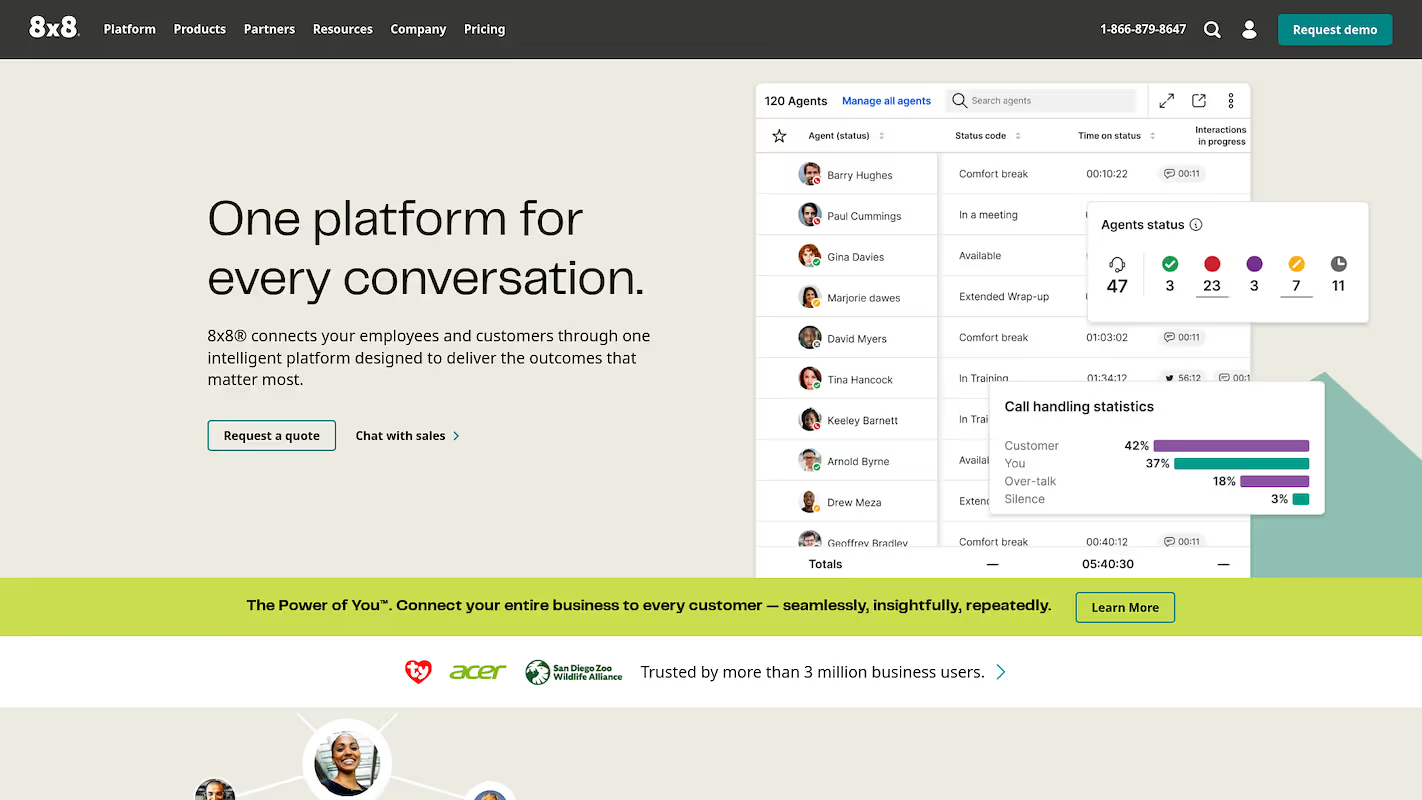
8x8 X Series is a cloud communications platform that unifies contact center, voice, video, and chat. The system connects employees with customers and consolidates separate tools, such as voice and video, into a single platform for every conversation.
It provides global calls for distributed workforces and can help modernize outdated phone systems. The platform uses AI to route calls and for self-service functions.
8x8 X Series's Main Features
- Unifies contact center, voice, video, and chat into a single, AI-driven platform.
- Offers no-code and low-code APIs to embed voice, SMS, and chat into any application.
- Adds enterprise telephony and contact center functions natively inside Microsoft Teams.
- Equips customer-facing teams like sales and service with specific CX tools through 8x8 Engage.
How 8x8 X Series Differs From Nextiva
Average Review score: 4.2/5 stars based on 765 G2 reviews.
- 8x8 X Series provides phone service in over 55 countries, which offers broader global reach compared to Nextiva's more limited international options.
- It offers a 99.999% uptime Service Level Agreement, a more specific reliability guarantee than Nextiva's general uptime claims.
- The platform supports video meetings with up to 500 participants, a larger capacity for company-wide meetings than what Nextiva typically provides.
- This tool adds enterprise telephony directly inside Microsoft Teams, offering a deeper integration with that ecosystem compared to Nextiva.
Where 8x8 X Series May Fall Short
- Some users report that the 8x8 X Series interface can be complex to navigate for daily tasks. In comparison, Nextiva's platform often receives praise for a more straightforward user experience, especially for core call management.
- The platform's implementation can sometimes be lengthy, with setup taking a couple of months. Nextiva, on the other hand, is often quicker to deploy for businesses that have simpler communication requirements.
- Occasional technical glitches or bugs within the 8x8 application are reported by some users. By contrast, Nextiva is generally recognized for its consistent performance and reliable call stability.
Pricing and Cost Comparison
While we've covered key features and use cases in this comparison, pricing models can vary significantly between tools. For the most accurate and up-to-date pricing information, we recommend visiting the 8x8 X Series 's official website.
4) Dialpad Ai Voice
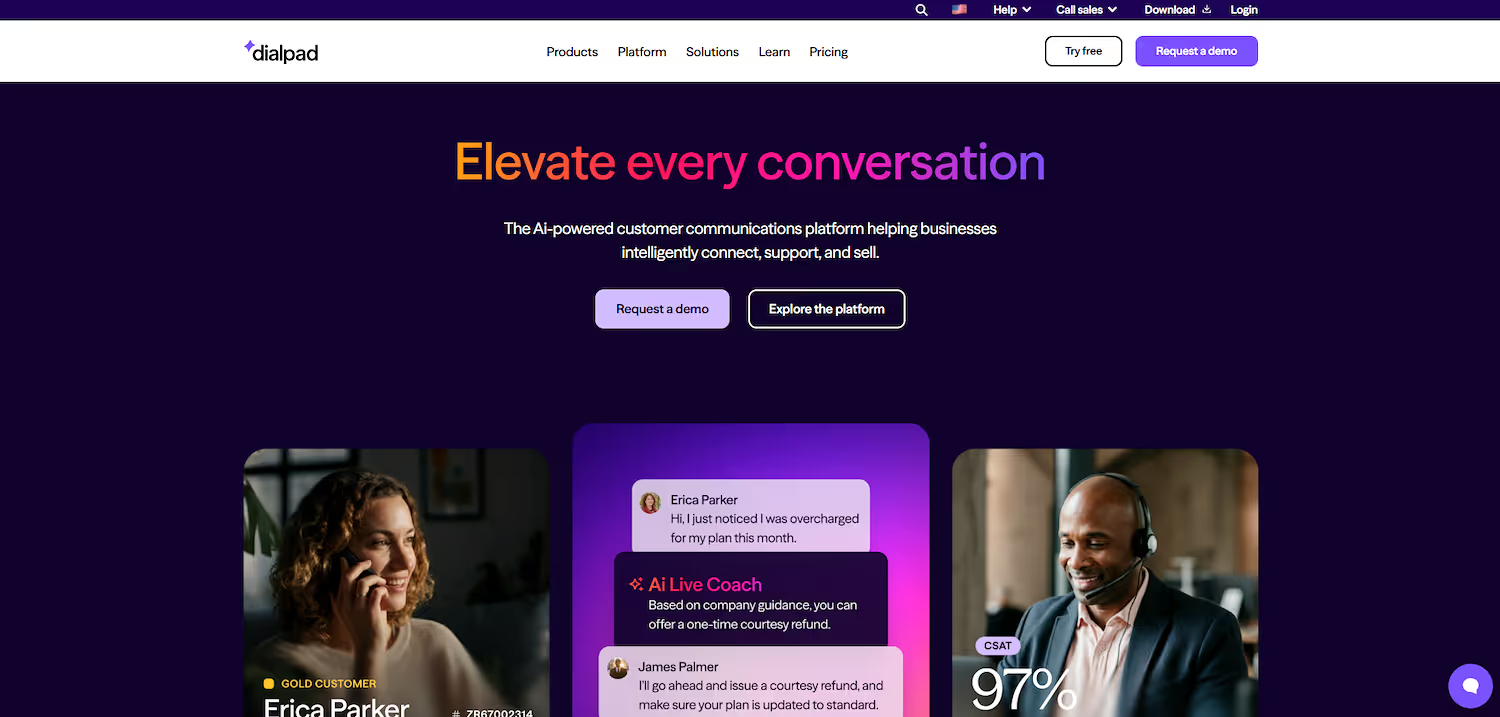
Dialpad Ai Voice is a business communications platform with built-in AI. It provides a phone system that works across devices and includes voice, video, and messages. The system offers real-time AI transcription for every call.
It also creates post-call summaries to capture important details. This platform suits businesses that need a unified communication tool with AI functions for their teams.
Dialpad Ai Voice's Main Features
- Offers a core AI layer that provides real-time transcription, sentiment analysis, and automated action-item extraction.
- Includes dedicated modules for support and sales teams with features like AI agents, live coaching, and an outbound sales dialer.
- Integrates with business applications such as Salesforce, Zendesk, and Microsoft Teams through an app marketplace.
- Runs on a dual-cloud architecture designed for resiliency and predictable AI costs.
How Dialpad Ai Voice Differs From Nextiva
Average Review score: 4.4/5 stars based on 3,901 G2 reviews.
- Dialpad Ai Voice provides real-time AI transcription and automated summaries for every call, offering more in-call assistance than Nextiva's standard call management.
- The platform's AI performs sentiment analysis and extracts action items from calls. This provides deeper insights compared to Nextiva's system, which focuses on core call functions.
- It includes dedicated tools for sales teams, such as live AI coaching during calls. This offers more specialized sales support than Nextiva's general business communication features.
- User feedback often highlights its ease of use, which can make daily tasks simpler compared to Nextiva's platform, sometimes described as complex.
Where Dialpad Ai Voice May Fall Short
- Some users report occasional connection glitches with Dialpad Ai Voice. In comparison, Nextiva is generally recognized for its consistent performance and reliable call stability.
- The platform can have sporadic limitations with call transfers or recordings. Nextiva, on the other hand, provides call management features that are often described as more straightforward and dependable.
- Dialpad may include extra fees for certain services like SMS. This is different from Nextiva, where plans often bundle a wider range of communication tools without separate charges, offering more predictable costs.
Pricing and Cost Comparison
Dialpad Ai Voice has a Standard plan at $15 per user, per month (billed annually) and a Pro plan at $25. For a direct cost comparison, you will need to consult Nextiva’s current pricing, as it varies based on features and team size.
5) GoTo Connect
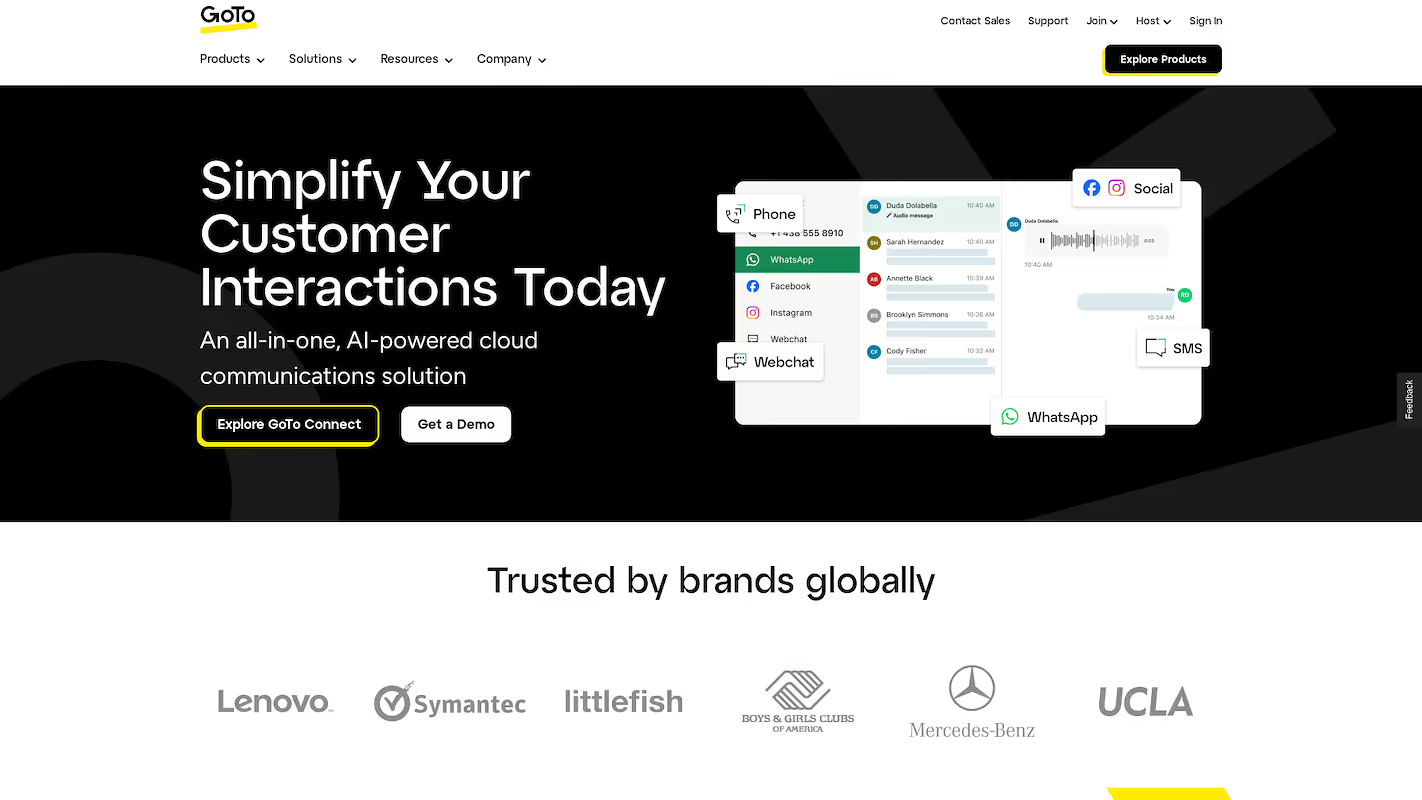
GoTo Connect is a cloud communications platform for phone, meetings, and messaging. The system provides businesses with a phone service and contact center tools.
It allows users to communicate from any device, which supports remote and hybrid work models. The platform consolidates business communication into a single application.
GoTo Connect's Main Features
- Includes a visual dial-plan editor that allows users to create and manage call flows using a drag-and-drop interface.
- Provides an AI Receptionist to answer calls and automate routine inquiries, acting as a 24/7 smart assistant.
- Combines a cloud phone system with an omnichannel customer experience suite that supports SMS, web-chat, email, and social media.
- Offers AI-powered tools that generate call summaries, analyze sentiment, and detect topics from conversations.
How GoTo Connect Differs From Nextiva
Average Review score: 4.4/5 stars based on 1,339 G2 reviews.
- GoTo Connect has a visual dial-plan editor to manage call flows with a drag-and-drop interface. This is a different approach compared to Nextiva's standard call routing setup.
- The platform provides an AI Receptionist that automates call routing and answers routine questions. This offers a level of automation distinct from Nextiva's standard call management.
- It offers a 99.999% uptime Service Level Agreement. This is a specific reliability guarantee, whereas Nextiva is generally known for stability without a similar public commitment.
- This tool combines its phone system with an omnichannel suite for SMS, web chat, and social media. This provides a broader range of communication channels than Nextiva's typical phone-focused plans.
Where GoTo Connect May Fall Short
- GoTo Connect sometimes has call quality issues, according to some user reports. In comparison, Nextiva's platform is generally recognized for more consistent call stability and reliable performance.
- The tool's built-in features may seem limited for businesses that require advanced functions. Nextiva, by contrast, often offers a more comprehensive suite of call management tools in its packages.
- Some users find the customer support experience to be a challenge. This differs from Nextiva, where feedback typically centers on the speed of support rather than the quality of the assistance provided.
Pricing and Cost Comparison
GoTo Connect’s Basic plan starts at $27 per user, per month, and its Standard plan begins at $32. For a direct cost comparison, you will need to consult Nextiva’s current pricing, as it varies based on features and team size.
Add Digital Workers to Your Sales Force
If you want to add digital workers to your sales operations, consider 11x. The platform uses autonomous agents for prospecting, outreach, and lead qualification. This approach can support your company's growth objectives by handling specific sales tasks.
With 11x, we use AI to run your sales playbook. Our agent Alice finds accounts and handles outreach, while Julian qualifies leads and schedules meetings. We replace separate tools for data, outreach, and email warmup, consolidating your GTM stack into a single platform.
Book a demo to see our AI agents at work.
6) Grasshopper
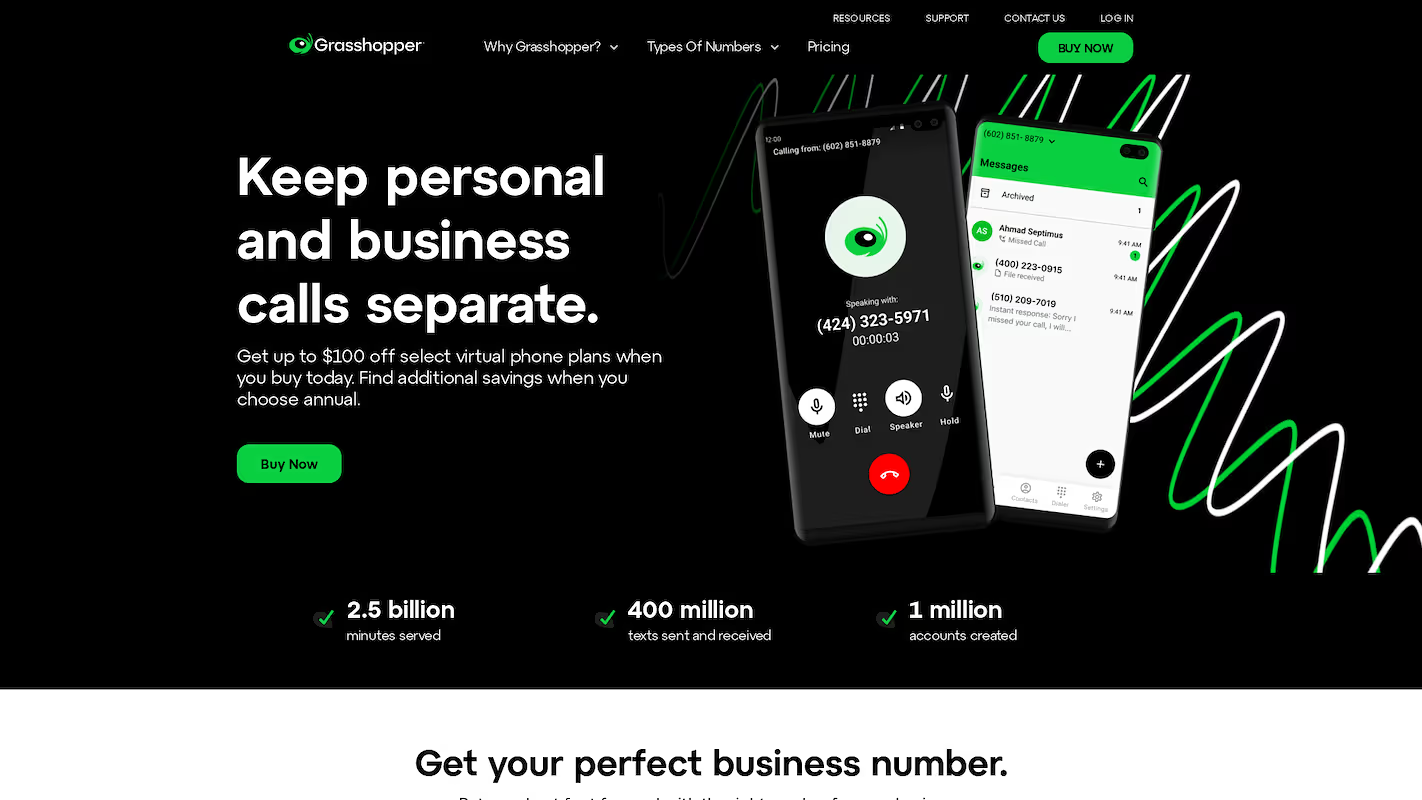
Grasshopper is a virtual phone system built for small businesses. It adds a business line to your personal phone, which lets you separate work calls from personal ones.
The system works through a mobile or desktop app. It provides features like business texting, call forwarding, and custom greetings to give a small operation a professional front without extra hardware.
Grasshopper's Main Features
- Adds a business line to your personal phone, which separates work and personal calls without requiring new hardware.
- Sends an automatic text message to new callers when a call is missed through its Instant Response feature.
- Receives inbound faxes as PDF attachments sent directly to your email.
- Offers an add-on service that provides live, U.S.-based virtual receptionists to answer calls.
How Grasshopper Differs From Nextiva
Average Review score: 3.9/5 stars based on 154 G2 reviews.
- Grasshopper adds a business line to a personal phone, which eliminates the need for new hardware. This approach is simpler for solo entrepreneurs compared to Nextiva's system, which is built for a full office setup.
- Its Instant Response feature automatically sends a text message to new callers when you miss a call. This offers a specific, immediate follow-up that differs from Nextiva's more general call routing options.
- The platform offers an add-on service with live receptionists who answer calls. This provides a human touch that is distinct from Nextiva's technology-based automated attendants.
- This tool is built specifically for small businesses and operates through a simple mobile app. It provides a more focused experience than Nextiva's platform, which serves larger teams with a wider, more complex feature set.
Where Grasshopper May Fall Short
- Grasshopper focuses on voice and text, so it does not include video meetings or advanced team collaboration tools. Nextiva, in comparison, offers a unified platform with integrated video and messaging.
- The system operates on existing mobile phones and does not support physical desk phones. This is different from Nextiva, which provides options for dedicated VoIP hardware for a traditional office setup.
- It offers fewer integrations with other business software like CRMs. In contrast, Nextiva provides a wider range of integrations, which allows for more connected workflows between applications.
- Some businesses might find its features too basic for a growing team. Nextiva's platform, by comparison, is built to scale and includes more advanced call management and analytics for larger organizations.
Cost-Effectiveness and Pricing
Grasshopper’s pricing starts at $14 per month, with plans at $25 and $55, which contrasts with Nextiva's per-user model that scales with team size. This makes Grasshopper a cost-effective choice for solo entrepreneurs, while Nextiva's structure is built for growing teams.
7) Ooma Office
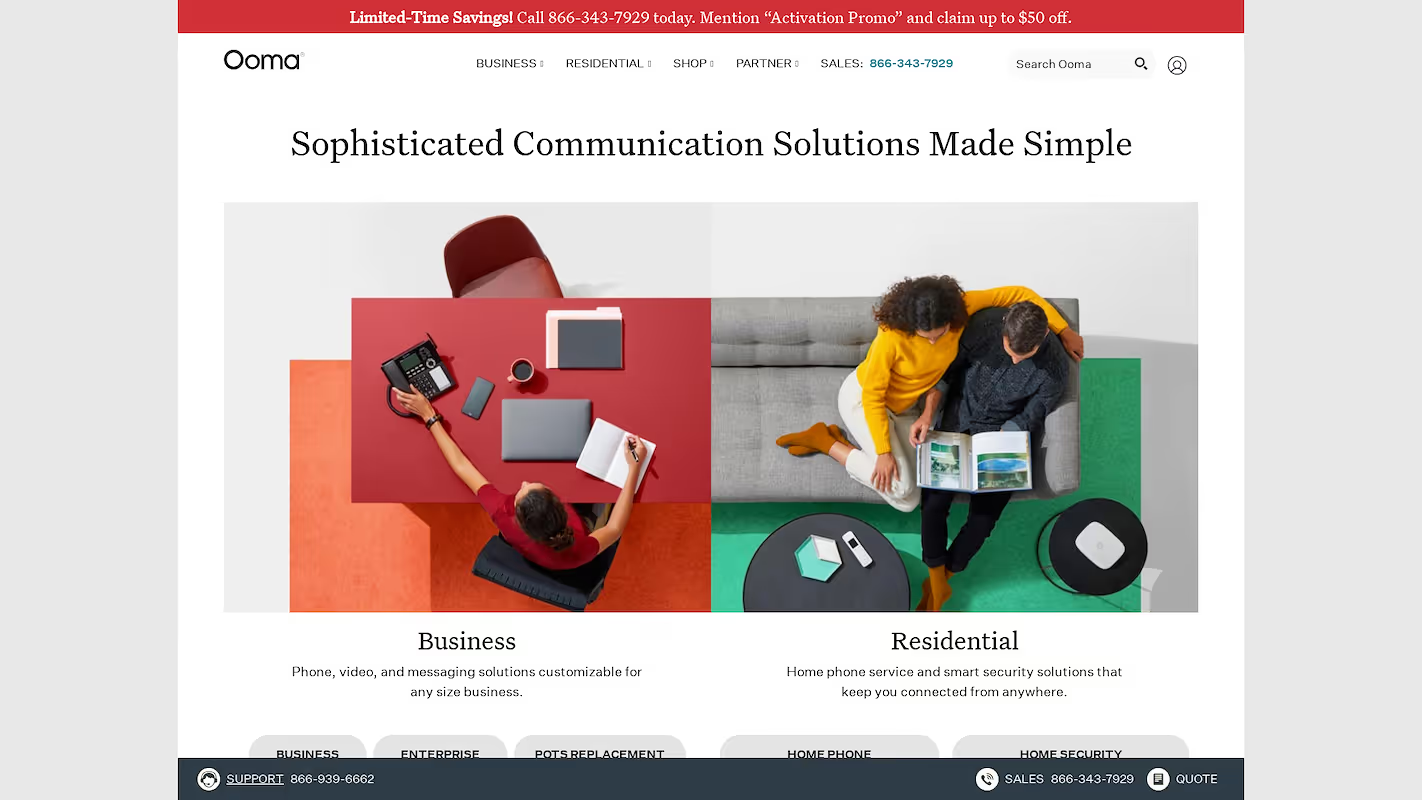
Ooma Office provides a business phone service designed for small companies. The system includes a virtual receptionist, call management, and a mobile app. It supports standard analog phones and dedicated IP phones, which gives businesses equipment flexibility.
Users can handle calls from any location. The platform offers a professional phone identity without the need for a complex installation.
Ooma Office's Main Features
- The platform includes a virtual receptionist to manage call flows, along with features like ring groups and call park.
- Its mobile app for iOS and Android includes a call flip function to move active calls between devices.
- Each user receives a dedicated conference bridge, and the system supports IP and overhead paging.
- Higher-tier plans add a desktop application, video conferencing, and call recording capabilities.
How Ooma Office Differs From Nextiva
Average Review score: 4.6/5 stars based on 129 G2 reviews.
- Ooma Office allows the use of conventional analog phones, which provides more hardware options compared to Nextiva’s system that is built for VoIP hardware.
- It offers service without long-term contracts, giving businesses more flexibility. This is different from Nextiva, which often structures its plans with annual commitments.
- The platform features a do-it-yourself setup process that can be simpler for small businesses. In comparison, Nextiva's platform may involve a more detailed implementation.
- This tool can be more affordable for small businesses, as customers report average savings of 50% over other providers. Nextiva's pricing, by contrast, scales with team size and feature tiers.
Where Ooma Office May Fall Short
- Ooma Office offers fewer native integrations with business software like CRMs. In comparison, Nextiva provides a broader app marketplace that allows for more seamless workflows between different business tools.
- The platform's analytics and reporting tools are more basic. They may not provide the deep insights into call performance and team productivity that Nextiva offers for larger teams that need detailed operational data.
- Its feature set is built for small teams and may not scale as effectively for a rapidly expanding business. Nextiva, by contrast, includes a more extensive suite of advanced communication tools designed for larger organizations.
Pricing and Affordability
Ooma Office has plans at $19.95 and $24.95 per user per month, often without long-term contracts. This provides a straightforward pricing structure, while Nextiva’s costs typically vary based on team size, contract length, and selected features.
8) Aircall
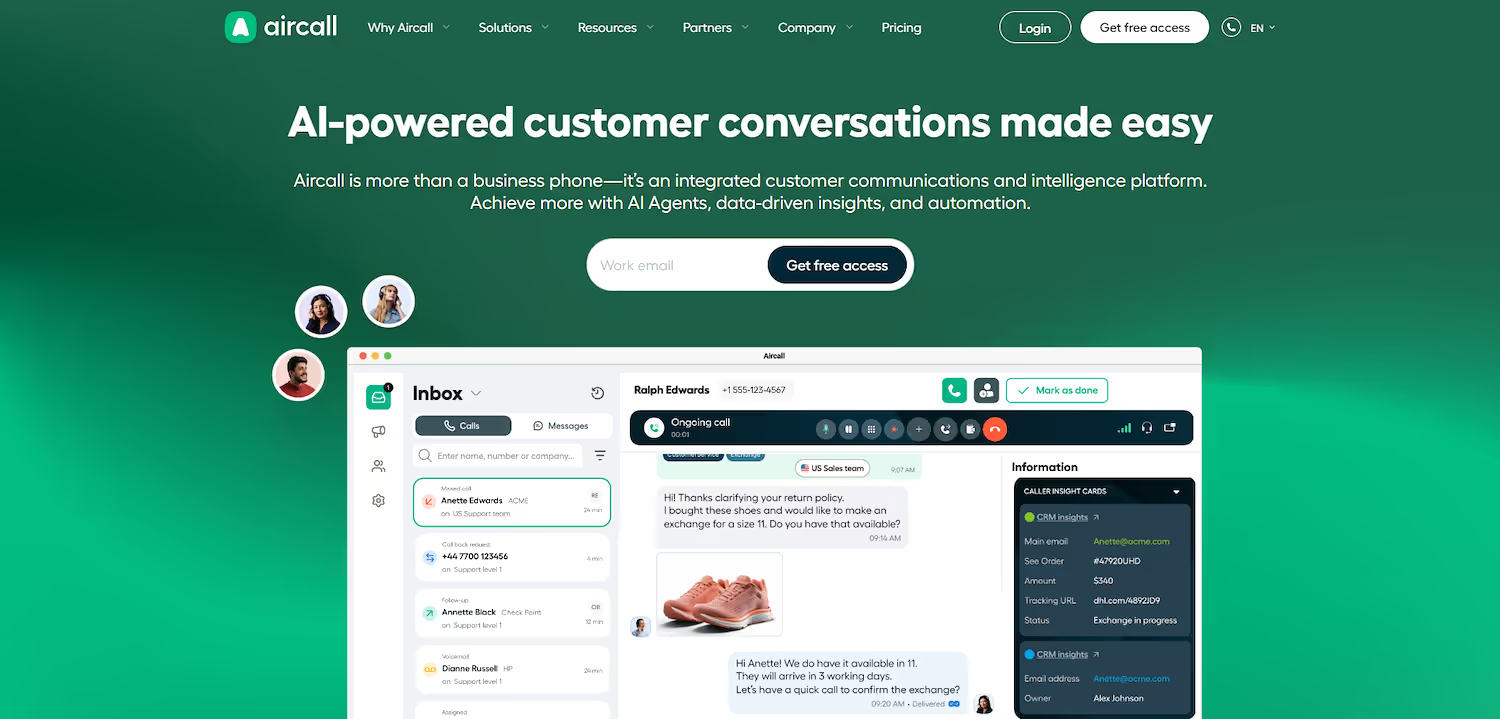
Aircall is a cloud-based phone system built for sales and support teams. The platform provides a business phone solution that works with popular CRM and helpdesk software.
It allows teams to manage calls from a desktop or mobile app. This setup supports customer conversations inside the tools a team already uses, which connects phone activity to business data.
Aircall's Main Features
- Integrates voice, SMS, and social media into a single platform with bi-directional syncing for over 100 business applications.
- Uses an AI-powered platform to automate call routing and other repetitive tasks for sales and support teams.
- Includes a Power Dialer and a live activity feed to help sales and support teams manage calls.
- Works on any device without requiring hardware, allowing for setup in a few minutes.
How Aircall Differs From Nextiva
Average Review score: 4.4/5 stars based on 1,314 G2 reviews.
- Aircall provides bi-directional syncing with over 100 business applications, which allows for a deeper connection with tools like CRMs compared to Nextiva's standard integrations.
- It includes a Power Dialer to help sales teams manage outbound calls, a specialized feature for sales productivity that is different from Nextiva's general call management tools.
- The platform works without any special hardware and allows for setup in minutes. This offers a quicker start compared to Nextiva, which often supports a more traditional office setup with physical phones.
- This tool offers a call coaching feature that lets managers listen in and guide agents during live calls. This provides more direct training support than Nextiva's standard call monitoring functions.
Where Aircall May Fall Short
- Aircall does not include video conferencing, so teams may need a separate application for video meetings. Nextiva, by contrast, offers a unified platform that combines voice, video, and team messaging.
- Some users report occasional connection issues or call drops with the service. This is different from Nextiva, which is generally recognized for its reliable call stability and performance.
- The platform's reporting tools can feel limited for in-depth analysis. Nextiva, on the other hand, provides more comprehensive analytics for larger teams that need detailed operational data.
Pricing and Affordability
Aircall’s Essentials plan is $30 per user, per month, and its Professional plan is $50, both billed annually with a three-user minimum. This structure contrasts with Nextiva's model, which typically scales based on team size and contract length without a stated user minimum, potentially making it more flexible for teams with fewer than three users.
9) Zoom Phone
Zoom Phone is a cloud-based phone system that adds voice calling to the Zoom platform. It integrates with the company's video and chat services, creating a unified communications tool.
The system allows users to make and receive calls from the Zoom application on desktops and mobile devices. It is designed for businesses that already use Zoom for meetings and want to consolidate their communication tools.
Zoom Phone's Main Features
- Adds business phone service directly into the Zoom application for a unified experience with video and chat.
- Provides intelligent call routing, an auto-attendant, and interactive voice response (IVR) to manage inbound calls.
- Offers a single app for voice calls, video meetings, and team chat on both desktop and mobile devices.
- Supports secure HD audio for all calls and includes features like call recording and voicemail transcription.
How Zoom Phone Differs From Nextiva
Average Review score: 4.5/5 stars based on 781 G2 reviews.
- Zoom Phone is natively integrated into the Zoom ecosystem, which provides a familiar interface for businesses already using Zoom for video. Nextiva offers its own separate suite of tools.
- The platform is often cited for its ease of use, which can offer a simpler user experience compared to Nextiva's system, sometimes described as complex.
- It provides a single application for voice, video, and chat. This consolidation is different from Nextiva, which may require users to navigate different parts of its platform for various functions.
- Zoom Phone offers a bring-your-own-carrier (BYOC) option, giving businesses flexibility to keep their current service provider. This is a more open approach than Nextiva's all-in-one service model.
Where Zoom Phone May Fall Short
- Some users find that Zoom Phone's core call management features are less advanced than those of dedicated VoIP providers. Nextiva, with its focus on telephony, often provides more robust call-handling options.
- The platform's support is for the entire Zoom suite, which can sometimes lead to less specialized assistance for phone-specific issues. This contrasts with Nextiva's dedicated phone system support.
- Businesses that do not heavily rely on video meetings might find the package includes features they do not need. Nextiva's plans can be more tailored to voice-centric operations.
Pricing and Cost Comparison
Zoom Phone offers plans starting around $10 per user, per month for metered calling, with unlimited plans at higher tiers. This per-user model is comparable to Nextiva's, but the total cost depends on whether a business also subscribes to other Zoom services.

Zoom Phone is a cloud phone system that adds voice call capability to the Zoom platform. It integrates with the company's video and chat services, which creates a unified communications tool. Users can make and receive calls from the Zoom application on desktops and mobile devices.
The system is built for businesses that already use Zoom for meetings and want to consolidate their communication tools into one place.
Zoom Phone's Main Features
- The AI Companion generates a post-call summary with next steps so users can focus on the conversation.
- It extracts tasks from voicemails and prioritizes them to help users organize their work.
- The platform provides a concise overview of team SMS threads for users to review after time away.
- It combines phone, chat, and meetings into a single application for all business communications.
How Zoom Phone Differs From Nextiva
Average Review score: 4.6/5 stars based on 2,481 G2 reviews.
- Zoom Phone's AI Companion generates post-call summaries and extracts tasks from voicemails. This provides more automation compared to Nextiva's standard call management features.
- The platform combines phone, video, and chat into the familiar Zoom application. This offers a simpler experience for current Zoom users compared to Nextiva's separate system.
- It offers a bring-your-own-carrier (BYOC) option that gives businesses more flexibility with service providers. This approach differs from Nextiva's all-in-one service model.
- This tool provides native phone service in over 40 countries. This offers broader international support than Nextiva's more limited global options.
Where Zoom Phone May Fall Short
- Some users find that Zoom Phone's core call management features are less advanced than those of dedicated VoIP providers. Nextiva, with its focus on telephony, often provides more robust call-handling options.
- The platform's support is for the entire Zoom suite, which can sometimes lead to less specialized assistance for phone-specific issues. This contrasts with Nextiva's dedicated phone system support.
- For businesses that do not heavily rely on video meetings, the all-in-one package might include features they do not need. Nextiva's plans, in contrast, can be more tailored to voice-centric operations.
Pricing and Cost Comparison
Zoom Phone offers a transparent entry point with its US & Canada Unlimited plan at $15 per user, per month. This makes it a straightforward choice for budget planning, whereas Nextiva requires a custom quote as its pricing varies with team size and contract terms.
10) Cisco Webex Calling

Cisco Webex Calling is a cloud phone system that adds business voice service to the Webex platform. It combines with the suite’s meeting and message functions to create a single application for all communications.
The system allows teams to handle calls from desk phones, computers, or mobile devices. It is designed for companies that want to replace a traditional phone setup with a cloud-based alternative.
Cisco Webex Calling's Main Features
- Integrates phone calls, video calls, and instant messaging into a single platform.
- Includes advanced features such as hold music, automated attendants, and a VoIP number.
- Provides access through software pairing, a browser extension, or an individual application download.
- Supports collaboration with file sharing, voice conferencing, and video conferencing capabilities.
How Webex Calling Compares to Nextiva
Average Review score: 4.5/5 stars based on 620 G2 reviews.
- Webex Calling integrates with the broader Cisco collaboration suite, including Webex Teams and Meetings. This creates a unified environment for users already in the Cisco ecosystem, unlike Nextiva's self-contained platform.
- The platform includes interactive tools like virtual whiteboards and advanced screen sharing. These features offer more dynamic collaboration options compared to Nextiva's standard call and messaging functions.
- It runs on a global, geo-redundant platform built for enterprise-level scale. This provides a different class of infrastructure assurance than Nextiva's system, which is known for general call stability.
- Cisco offers a full range of its own hardware, from phones to video endpoints, that works with the software. This creates a more cohesive hardware-software package than Nextiva, which relies on third-party VoIP devices.
Where Webex Calling May Fall Short
- Some users report that the initial setup for Webex Calling can be complex. This is different from Nextiva, where the core phone system is often more direct to implement for basic communication needs.
- The platform sometimes has audio lag or sync delays during calls, according to user feedback. In comparison, Nextiva is generally known for its consistent call stability and reliable performance for voice communication.
- Webex Calling is part of a large collaboration suite, which might be too much for businesses that only need a phone system. Nextiva's plans can be more focused on voice services, which sometimes makes it a more cost-effective choice.
Pricing and Plan Comparison
Webex Calling offers a Call Plan at $12 per user, per month, and a combined Meet + Call Plan at $20. This provides a clear pricing structure, while Nextiva's costs are customized based on team size and contract terms, requiring a direct quote.
Which One Should You Go With?
Choosing the right Nextiva alternative depends on your company's specific needs, from team size to required features. This guide reviewed several options to help you compare platforms and make an informed decision.
If your goal is to support your sales team, 11x provides autonomous agents for tasks like prospecting and lead qualification. This approach can consolidate your sales tools and add digital workers to your go-to-market operations.




